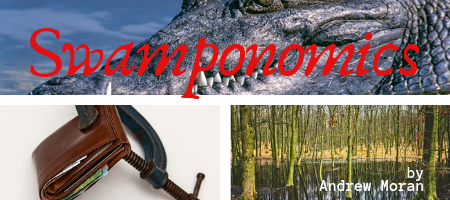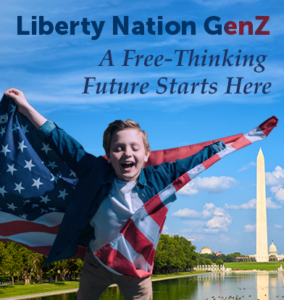Show Some Interest!
In March, the Federal Reserve slashed interest rates by 150 basis points to a target range of 0% and 0.25%. Before holding its April Federal Open Market Committee (FOMC) policy meeting, most analysts anticipated that the U.S. central bank would leave rates where they are. Some pundits encouraged the Eccles Building to slip into subzero territory. So, what did it do?
 Chair Jerome Powell and his associates unanimously voted in favor of holding its benchmark overnight rate steady. According to a statement from the Board of Governors, the Fed promised to maintain an accommodative policy until the economy reaches full employment again and hits its 2% target inflation rate objective.
Chair Jerome Powell and his associates unanimously voted in favor of holding its benchmark overnight rate steady. According to a statement from the Board of Governors, the Fed promised to maintain an accommodative policy until the economy reaches full employment again and hits its 2% target inflation rate objective.
During his post-meeting news conference, Powell confirmed that the Fed is in no hurry to normalize rates and tighten operations. He reassured markets that the central bank is “going to wait” until the economy is on the path of recovery before it considers heading out the exit door. This suggests that the Fed’s open-ended quantitative easing program has no expiry date and could persist for the next 18 months.
“The ongoing public health crisis will weigh heavily on economic activity, employment, and inflation in the near term, and poses considerable risks to the economic outlook over the medium term. The Committee expects to maintain this target range until it is confident that the economy has weathered recent events and is on track to achieve its maximum employment and price stability goals.”
While it is unlikely the Fed will be announcing a rate hike anytime soon, could a Powell Putsch include a weapon of subzero interest rates a la the European Central Bank (ECB) or the Bank of Japan (BoJ)? Powell has yet to comment on it, but the former president of the Federal Reserve Bank of Minneapolis, Narayana Kocherlakota, opines that “unprecedented situations require unprecedented actions.”
Overall, the Fed confirmed that it is “committed” to using a “full range of tools” to support the economy. Whether this includes negative rates or not remains to be seen.
Abandon All Hope Ye Who Enters Here
We know that the Fed is intervening in financial markets, but did it invest in razor blade and Prozac companies, too?
Soon after the conclusion of the two-day FOMC powwow, Powell held a virtual press conference that made anyone who listened want to find the nearest bridge. The central bank head essentially confirmed that its multi-trillion-dollar blitzkrieg may not result in a successful recovery, warning that more “economic pain” is coming for much of the country as the data has yet to catch up to the real damage.
Despite 0% interest rates, QE infinity, and astronomical balance sheet growth, Powell conceded that it might not amount to a hill of beans in this crazy, mixed-up world if companies and consumers are not spending. In fact, according to Powell, “it may well be the case that the economy needs more support from all of us.” Until most of the population is confident that the Coronavirus is under control, he believes “they will be reluctant to undertake some kinds of activity.”
In the meantime, he thinks it is impossible to predict when the economy would begin to improve or when the public health crisis subsides. “This is a new kind of uncertainty added onto our regular uncertainty,” Powell told reporters.
At least there was one moment of relief during his news conference: “We won’t run out of money.” Of course, that much is given when you control the printing presses and can run them 24/7 to bail out Congress and provide the world’s largest economy a lifeline to survive until tomorrow.
We All Scream for Main Street
In early April, the Eccles Building announced a $2.3 trillion Main Street Lending Facility. While it was initially marketed as a mechanism to lend a hand to small- and medium-sized businesses in the greater economy, it quickly morphed into a one-size-fits-all program that will benefit Wall Street and large firms – and the politically correct left.
Put simply, it was overhauled to make more people eligible. It is comparable to Oprah Winfrey: You get Fed funds! You get Fed funds! Everybody gets Fed funds!
The most recent change to the massive monetary scheme is opening it up to companies with up to 15,000 employees and $5 billion in revenues. The original April 9 announcement limited the initiative to businesses with 10,000 workers and $2.5 billion in revenues. The Fed defended the revision by noting that many large employers are not big enough to tap into the capital and public markets.
The other alteration involves extending financial institutions some autonomy in deciding the accounting metrics for the $600 billion in loans. This means that companies can make commercially necessary layoffs and allow borrowers to use the Fed loans to pay off other debts. Minimum loan sizes were trimmed from $1 million to $500,000, and the maximum was increased from $150 million to $200 million.
As part of its Main Street Lending Facility, the Fed is bailing out cash-strapped municipalities, too. It first only permitted ten cities and 16 counties, but after complaints that it left out many large urban centers with immense black populations, it expanded eligibility. The program will now include cities with 250,000 people and counties with 500,000, down from one million and two million, respectively. This makes about 80 cities and 100 counties, such as Atlanta, Detroit, Miami, New Orleans, and Newark, qualified.
The Fed has thought of everything, hasn’t it? Unlimited QE, corporate debt, municipal bonds, business lending, bank reserves reductions, and ultra-low interest rates – what else could the Fed possibly do at this point? And here is where we circle back and consider the possibility of negative rates.
~
Read more from Andrew Moran.
For home study students and young people, Liberty Nation recommends…
All About COVID-19 and the Economy
High School: How COVID-19 Has Impacted the US Economy
Middle School: The Economic Cost of COVID-19
All About the Economy
High School: What is Interest and How Does it Work?
Middle School: What is Interest?
Elementary School: What is a Bubble?
Watch Now
VIDEO: What’s the Deal with the Federal Reserve?




